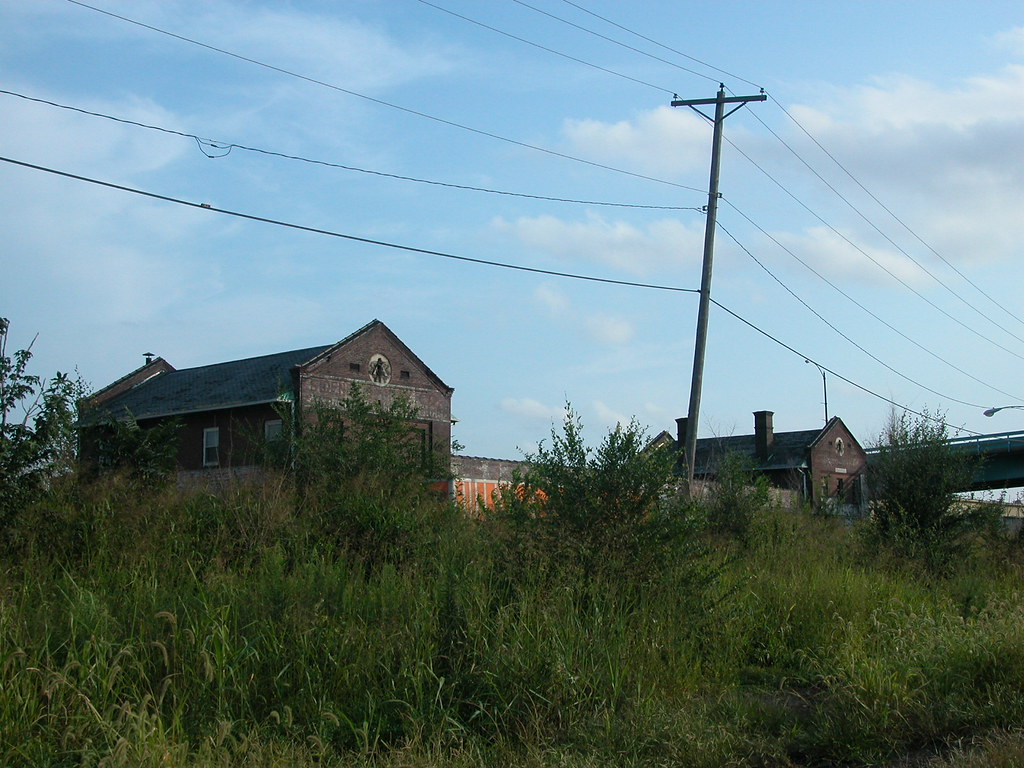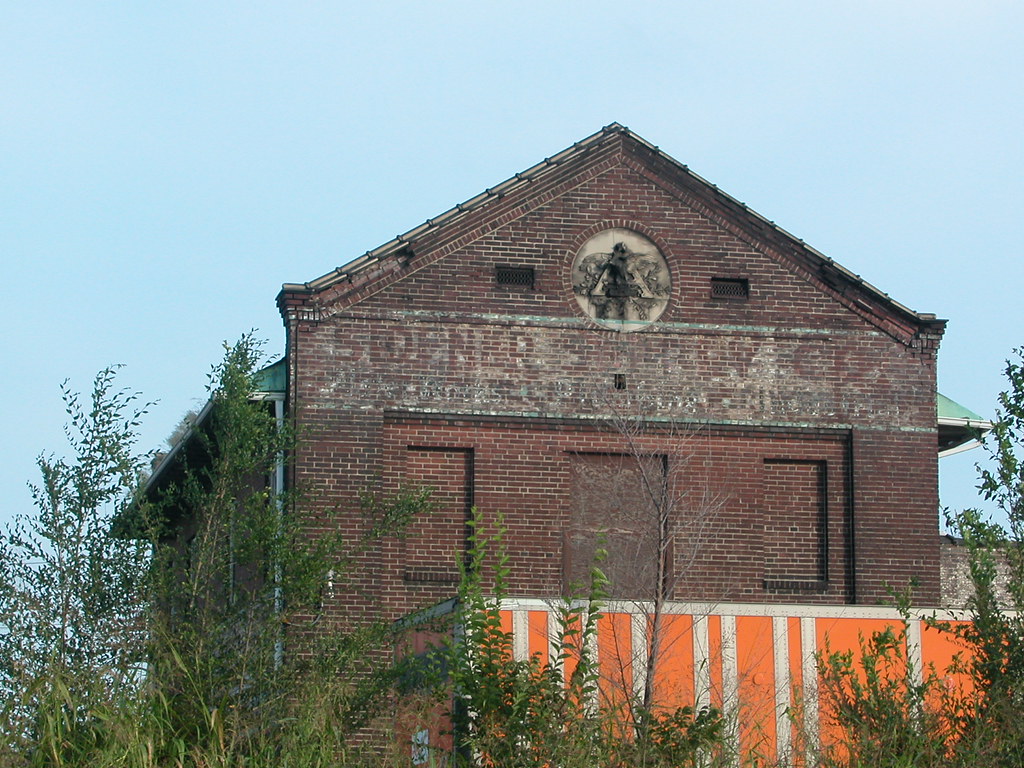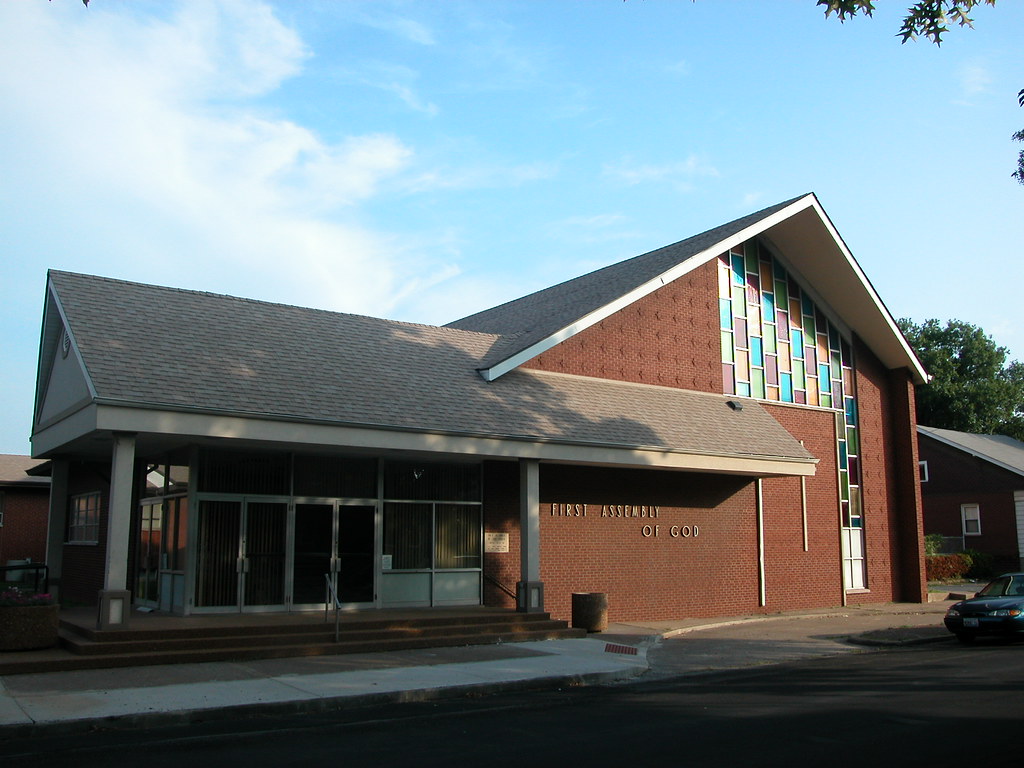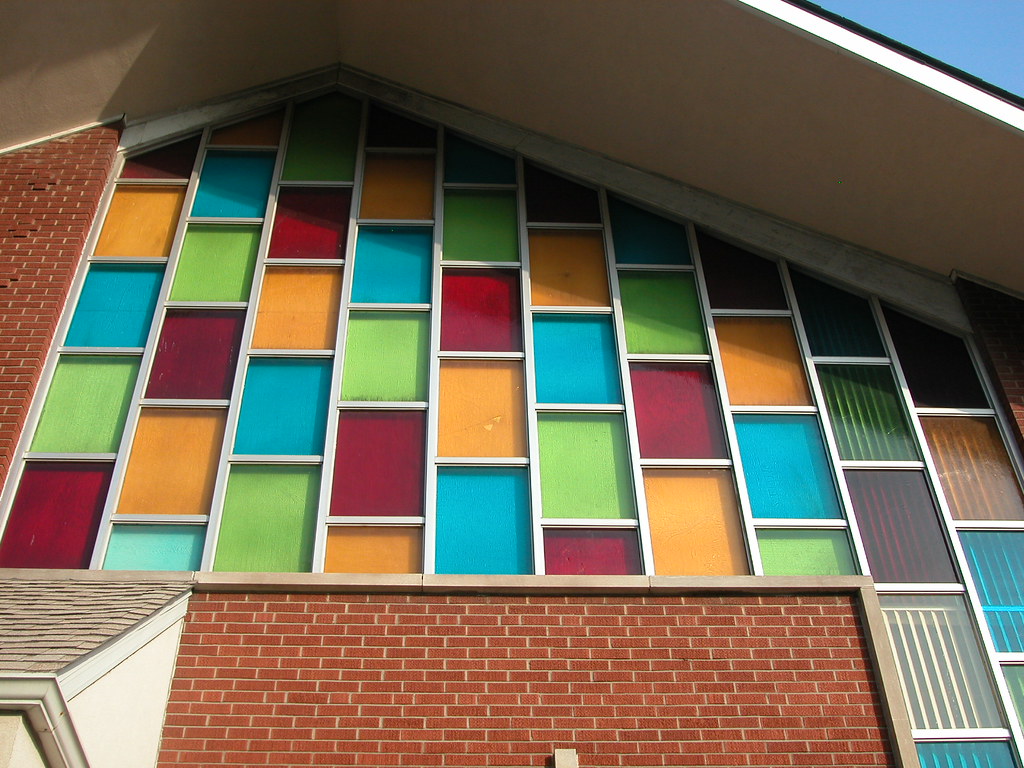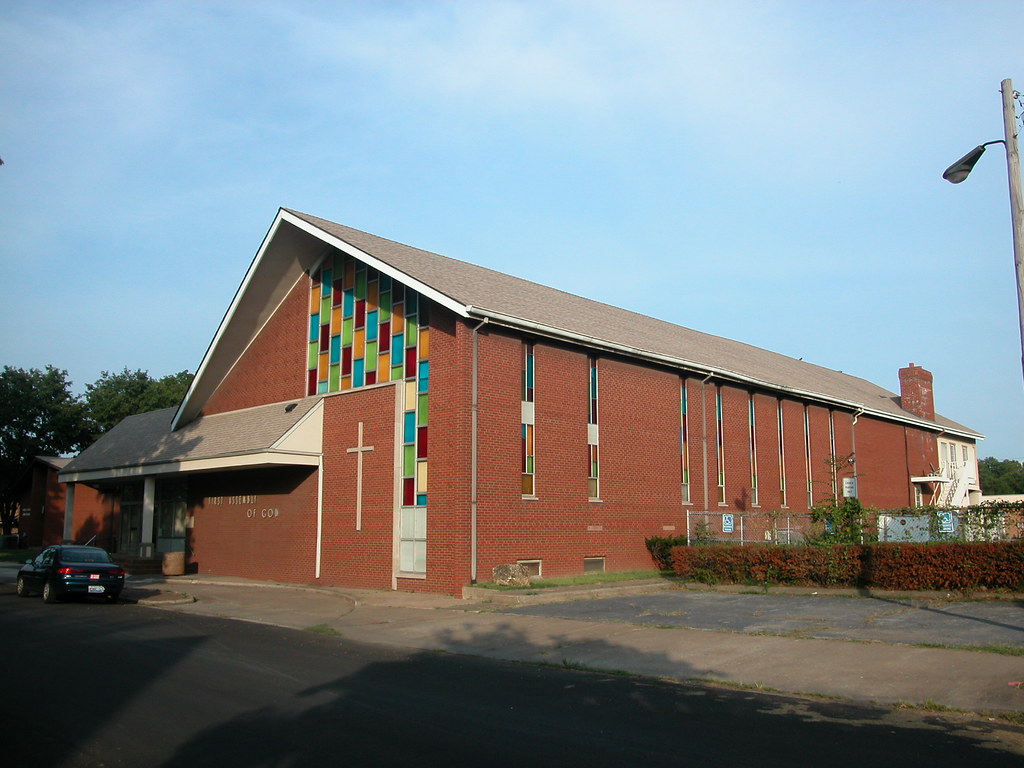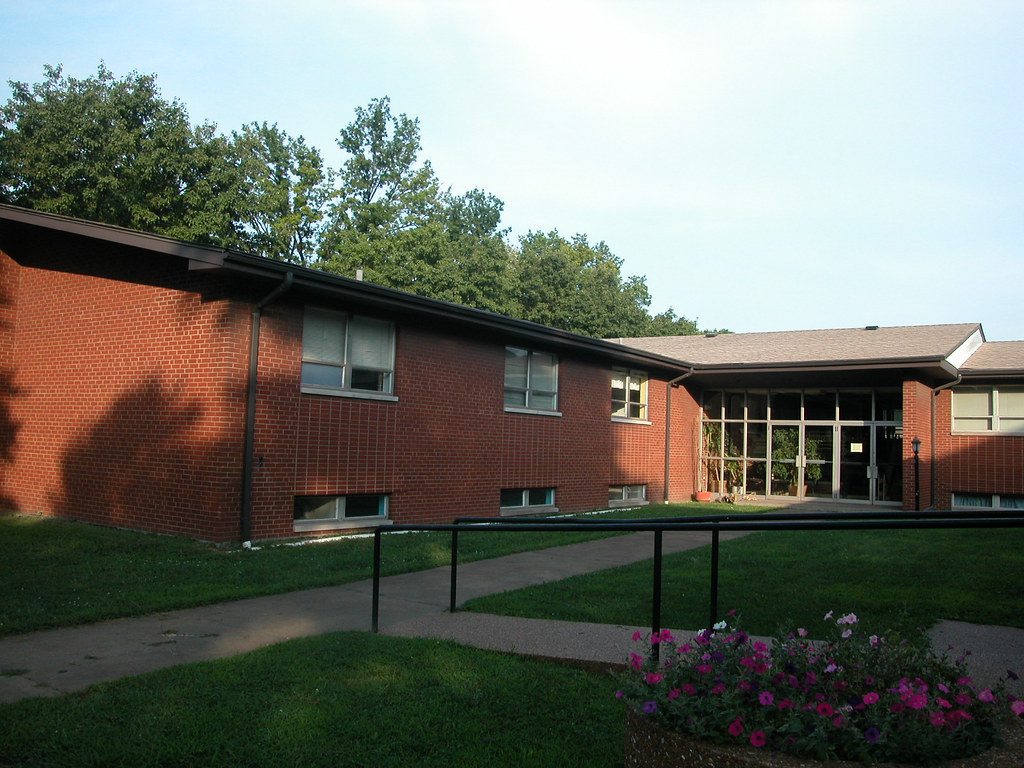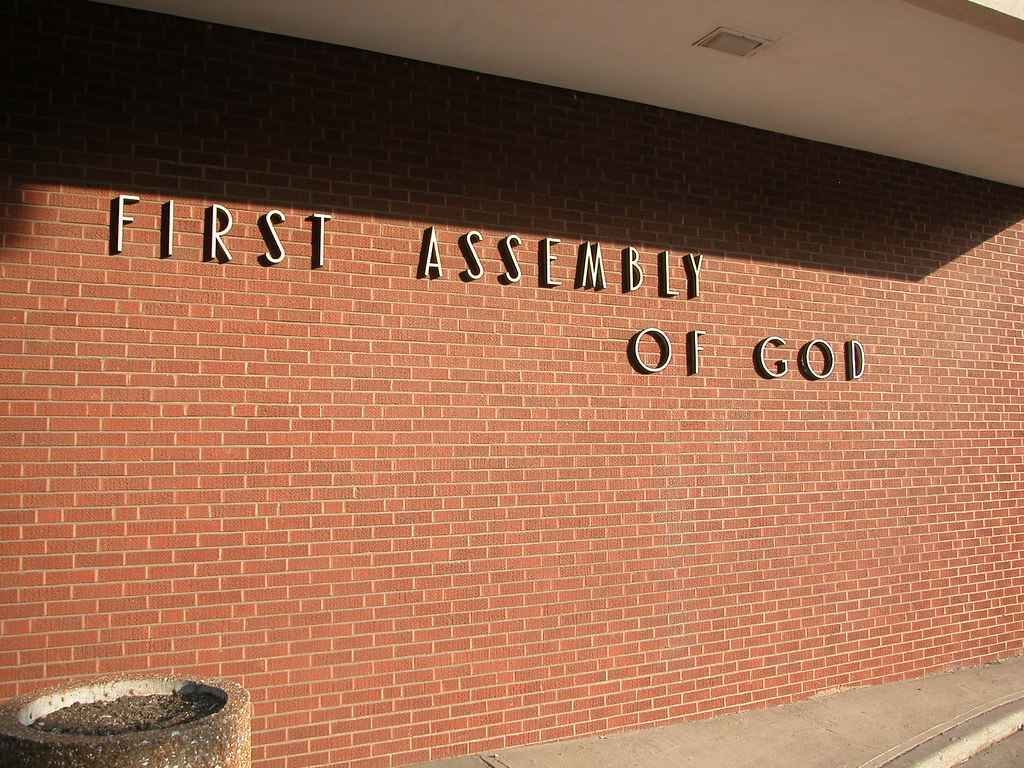Based on notes for a bus tour that I gave during the 35th Annual Conference of the Society for Industrial Archeology, June 2, 2006.German immigrants Frederick G. and William F. Niedringhaus played a major role in St. Louis history by organizing the industrial city of Granite City, and a major role in American industry by pioneering the process of creating durable, affordable stamped and enamelled metal-ware. They came from Westphalia to St. Louis around 1858 after having trained under their father, a tinner and glazier. With $1,000 and three helpers, the brothers incorporated Niedringhaus & Brother in downtown St. Louis. Their first products were hand-made kitchen utensils, but early on they experimented with mechanized production. By 1862, the brothers began using machines to stamp utensils from single sheets of metal -- a technique on which they would build their fortunes. By 1865, they were making deep-stamped wares and were likely one of only two such makers in the country. The brothers began working with sheet iron imported from Wales.
The Niedringhaus brothers founded the more focused St. Louis Stamping Company in 1866, and enjoyed immediate success. Their seamless stamped tinware met the public demand for durable, affordable kitchenware. The first year's sales were $7,000 -- an amount that they would increase one-hundred-fold within eleven years. Production increased to levels that led them to purchase land north of downtown near the Mississippi River in 1870. They built a four-story brick manufacturing, warehouse and office building between 1871 and 1873. This building, still extant, was likely designed by architect August Beinke and faced Collins Street between Cass Avenue to the south and Collins Street to the north. By 1876 adjacent to the first building, the brothers built seven additional smaller buildings including a blacksmith shop, annealing building, galvanizing shop and boilerhouse. (Part of one of these buildings remains.) North of this block, the Niedringhaus brothers constructed a rolling mill in the style of the English tin-plate mills of the era. This railroad- and river-served mill could produce twenty tons of sheet metal daily and employed about 700 workers.
During this decade, the brothers developed and patented their famous granite ironware. Their attempts started in spring 1873 with manufacturing of enameled kitchenware like that William had seen on a trip to Europe. (He paid the maker $5,000 so that he could observe the process for weeks.) Three groups were working on developing such kitchen ware at the time: the Niedringhaus brothers; Lalance & Grosjean in Woodhaven, Long Island, New York; and Jean Vollrath in Sheboygan, Wisconsin.
The brothers saw limitations to enameled kitchenware, and sought to improve its performance in American cooking, which utilized gas stoves made of iron. They came up with a process in which a sheet-iron body was coated in highly vitrified glass. The coating was virtually insoluble, blocking cooking oils and food acid that caused oxidation in iron. The glass coat was infused with iron oxide in artistic patterns, strengthening the glaze and giving the product an attractive speckled appearance like granite. The process for production was developed by April 1874, when the first piece was made. With the new process, granite ironware was lightweight, cheap and almost indestructible. The St. Louis Stamping Company began selling the wares worldwide. Locally, the company remained the only producer and seller of stamped japan, tin and iron wares. Total sales were over $400,000 in 1875.
Frederick Niedringhaus secured a patent on the granite ironware process on May 30, 1876. The St. Louis Stamping Company plant was updated with new plating machinery and a new building to handle demand for the newly-patended product. The new five-story building was completed in March 1877, bringing the plant size to two full city blocks. Between 1866 and 1877, annual sales for the company expanded from $7,000 to $700,000. The plant processed 550 tons of iron and 400 tons of tin each year, with employment at 450 men. This growth boom continued into the 1880s, with the product output reported in the Year Book of the Commercial, Banking and Manufacturing Interests of St. Louis at 5,000 tons by 1882-3. George W. Niedringhaus, son of William F., became treasurer of the company in 1884. George W. would become a major player in the development of the company in the next twenty years, and would later serve as president. As the founding brothers aged, George ensured that an active family member would remain involved in planning the long-term future of the stamping company. The company's national stature grew in the 1880s, and by 1888 there were St. Louis Stamping Company branch offices in Chicago and New York.
In 1888, Frederick G. Niedringhaus successfully sought election to the U.S. Congress as a Republican from the Eighth Congressional District of Missouri and served one term from March 1889 until March 1891. Niedringhaus had basically run for the office to secure steep tariffs against foreign tin plate, to secure the dominance of American companies like his own. Niedringhaus aided passage of the McKinley Tariff Act of 1890, which raised the duty on tin plate from $22.40 to $49.28 per ton. Two months after passage of the act, the Granite Iron Rolling Mills began to produce tin plate. By 1890, employment at the stamping plant rose to 900 workers. Upon his return to St. Louis, Frederick joined his brother in seeking a new site for the company's operations. The first plan was to expand near the stamping plant, but with the Rolling Mills' use of the Bessemer process for steel production, which used a lot of smoke-producing coal, a city location was politically impossible to secure.
Like many industrialists of the Gilded Age, the Niedringhaus family set their sights on open land outside of the city proper, hoping to find land not only for building a new plant but also to create a town that would house its workers and memorialize their entrepreneurship. This search inevitably took them east across the Mississippi; most available undeveloped land in Missouri around St. Louis was far west away from railroad trunk lines, good roads and the river. Many industrial concerns had made the move to the east side of the river, as we will see when we visit the nearby stockyards district later today. The land available was flat and sparsely populated; most was in use as farmland.
William Niedringhaus and his son George, whom many historians consider the driving force behind the land search, set out in August 1891 to survey lands just northeast and across the river from their stamping works in St. Louis. They visited the small town of Kinderhook (also known as Kinder) on the so-called Six-Mile Prairie in Madison County, Illinois.
The Six-Mile Prairie, literally a six-mile long fertile prairie, had been populated by farmers as early as the last decades of the eighteenth century, and sufficient population existed in its vicinity for the area to become Illinois' third official county in 1812. The Six Mile Prairie Township was organized in 1817, and the area received the name of “Venice” during this period. During the 1830s, the National Road segment through the Six Mile Prairie was completed. In 1849, farmers needing access to market banded together to build a plank road from Venice to the city of Edwardsville to the northeast. This road consisted of 12-foot oak logs split and laid face up on top of wooden rails, and original wood was found in excavations into the 1930s.
The improved road access led more farmers to the area, and eventually small towns like Kinderhook appeared on the prairie. Perhaps the biggest economic boon, however, came in 1856 when the Terre Haute and Alton Railroad built tracks south from Alton to East St. Louis across the land that would become Granite City. Without a rail bridge to St. Louis, this railroad terminated at Wiggins Ferry on the East St. Louis waterfront, from which train cars crossed into St. Louis via ferry. This situation changed little when the Eads Bridge was completed, due to railroads' not being able to obtain Missouri licenses needed to cross the river and later due to monopoly control of the bridge.
The Terre Haute and Alton line finally obtained a river crossing when the three-span truss Merchant's Bridge opened in May 1890. By then, Venice Township had incorporated in 1872 and there was enough population on the Prairie to support a schoolhouse.
Still, the area was very rural when the Niedringhaus family began to explore it. When they returned in 1892 to visit, they hired Kinderhook village schoolteacher Mark Henson as their land agent and scout. Henson obtained options on around 3,500 acres of land for the family, and they completed their purchase in 1893. they immediately set out to plan and built their new city, which the brothers infused with progressive ideals envisioned not as the conventional “company town” but a real city where residents might be factory workers but would buy their own lots and raise their own homes as they saw fit. William had studied Pullman, and thought that a more libertarian model would lead to a city that could be successful no matter what the St. Louis Stamping Company's fate.
The family's deliberation over the name favored Granite City, the suggestion of patriarchs Frederick and William honoring the family's product, over the less modest name of Niedringhaus offered by other family members.
By the end of 1893, the city had a plan designed by the city engineer of St. Louis. The design was inspired by that of Washington D.C., where Frederick Niedringhaus has just served in Congress. The brothers asked for an east-west thoroughfare diagonally crossing the city's grid like Pennsylvania Avenue in the District of Columbia. On this street they would bestow family name. They also planted over 14,000 trees along the city's new streets within two years of purchasing the land. Not all was progressive, though: blacks had to leave the town at sunset, and many black workers settled in nearby Lovejoy (now Brooklyn); the city charter forbade taverns; the Niedringhaus brothers made an estimated $4.8 million selling residential lots that had required $568,000 to purchase.
In 1895, the family hired noted St. Louis architect Frederick C. Bonsack to design new plants: one for the St. Louis Stamping Company, and another for a steel rolling mill to supply the stamping works. The new plant for St. Louis Stamping comprised 30 acres and produced graniteware and galvanized ware (among other products) for pots and pans, foot baths and gold miners' pans. Bonsack designed a wonderful four-story office building in the Romanesque style, featuring a wide Richardsonian arched entrance under a small tower. Within seven years, 1,200 people would be employed there. By the end of the year, the family opened the Granite City Steel plant that today is part of US Steel. The plant contained two 22-ton open-hearth furnaces and four mills capable of producing 20,000 gross tons of finished product annually. This facility was needed to supply rolled steel sheets to the stamping company. Originally, the plant only made the sheets but in 1905 diversified its output. By 1908, the plant made 4 tons of bar steel and tin plate daily, employed 2,000 men and covered 15 acres. The St. Louis plant would remain active until 1912, when the family closed it.
The city was incorporated in 1896 with a mayor-council form of government. No Niedringhaus family members would ever serve in city government, although they would have a hand in the finances of everything from banks to gas companies. The first city school, designed by Bonsack, was built in 1896 and named for Ralph Waldo Emerson, who epitomized the American individualistic democratic sentiment that the Niedringhaus brothers wanted their city to embody. Within ten years, population needs and steady increases in city revenue led to three additional schools' being built. With all the big industry located within city limits, the city government never suffered the same way that East St. Louis did. In East St. Louis, most major industrial concerns intentionally located plants outside of but close to the city line, so they affected the city but did not contribute to its upkeep.
In 1899, the Niedringhaus family's growing national reputation enticed them to rename their stamping company the National Enamelling and Stamping Company, or NESCO. NESCO kept its main office in downtown St. Louis, and founding brothers Frederick and William never moved to the city, instead residing in fashionable West End mansions.
In 1900, the city's population had grown to 3,122 people. By the middle of the first decade of the 20th century, about ten years after Granite City was founded, the stamping works covered 1.25 million square feet on 75 acres of land and employed 4,000 persons.
With its hundreds of jobs for skilled and unskilled laborers, the city became a magnet for immigrants. The first wave of immigration came to work at the NESCO plant and steel mills, and largely consisted of Welsh and English immigrants. Many Polish families migrated from St. Louis around 1900, followed by Slovaks, Greeks, Croations and Serbs who largely worked at the Commonwealth and American steel foundries. Later waves of immigration included Macedonians, Bulgarians, Romanians, Russians, Lithuanians. Finally, Mexicans arrived during World War I to take the place of conscripted laborers.
Inter-urban rail arrived in 1910 when the Illinois Traction System built a line through the city and south to the McKinley Bridge. This system connected a station in downtown St. Louis with Granite City and central Illinois cities such as Urbana, Peoria and Springfield. Also around this time, Granite City saw a local streetcar company open that operated until July 1958.
In 1924, NESCO had $30 million in assets, covered 75 acres and had a plant floor space of 1.25 million square feet. The company was employing 4,000 people. By 1930, the city's population had risen to some 25,000 people.
NESCO came up with yet another innovation in the 20th century, when it developed the single-coat-enameled NESCO Royal Graniteware. Yet the product's appeal would wane. Granite ironware could barely compete with aluminum cookware, Pyrex, Corning Ware and stainless steel as they were developed and mass marketed from the 1930s onward. NESCO enjoyed some success during World War II, when it produced helmets and “Blitzkrieg” cans for the US government. These cans held fuel or water and floated in water with all but the top quarter inch underwater. These almost-invisible cans made delivery of provisions at sea much easier for the US Navy.
Unfortunately, in 1956, NESCO closed its doors. Granite City managed to maintain its industrial growth for awhile even without the giant, although gradually decline has caught up with the city. Population peaked in 1970 at 40,685 residents; today's population is around 31,000 people.
Sadly, in November 2003 a huge blaze destroyed most of the remaining NESCO buildings. The buildings, some with wooden post-and-beam construction, had been used for warehouse space since 1956. By 2003, over 10,000 tires were stored in the buildings; the tires along with propane tanks allowed the fire to quickly spread out of control. Firefighters spent 14 hours battling the blaze, and the damaged buildings were immediately demolished. One four-story section of a building still stands along with a few smaller buildings.
BibliographyGranite City,
A Pictorial History, 1896-1996. Granite City, Ill.: G. Bradley Publishing, 1995.
Landmarks Association File: St. Louis Stamping Company Buildings.
Missouri Historical Society Library and Collections Center: Various Files.
Theising, Andrew. Made in USA: East St. Louis. St. Louis, Mo.: Virginia Publishing, 2003.
 Last year, the building at 1310 Niedringhaus Avenue in downtown Granite City burned. The neighbor at 1308 Niedringhaus (at right above) suffered some damage, but nothing that compromised its structural integrity.
Last year, the building at 1310 Niedringhaus Avenue in downtown Granite City burned. The neighbor at 1308 Niedringhaus (at right above) suffered some damage, but nothing that compromised its structural integrity. One can see that these buildings were part of an uninterrupted row of downtown buildings with storefront retail activity. Such blocks are few and far between in Granite City these days. Now there is one less, because the government of Granite City successfully pushed to have both the buildings at 1308 and 1310 Niedringhaus Avenue demolished. Today, the site is a gaping hole in the street wall.
One can see that these buildings were part of an uninterrupted row of downtown buildings with storefront retail activity. Such blocks are few and far between in Granite City these days. Now there is one less, because the government of Granite City successfully pushed to have both the buildings at 1308 and 1310 Niedringhaus Avenue demolished. Today, the site is a gaping hole in the street wall. 
